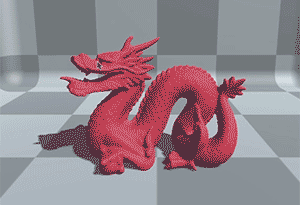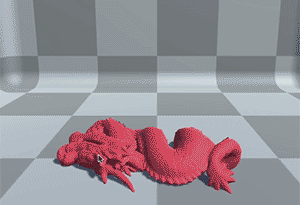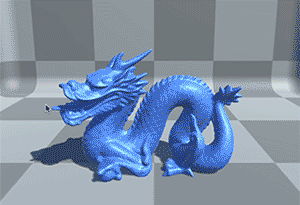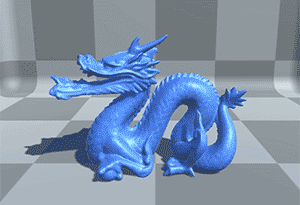Shape Matching Constraints 
Shape matching constraints link a group of particles together and try to keep them in the same position and orientation relative to each other, while allowing the group as a whole to rotate and translate freely. Each individual group of particles is generally referred to as a "cluster". Multiple clusters can overlap, and the particles shared between them will try to minimize deformation for all clusters they're involved with. This mechanism is used to allow some degree of deformation in softbodies.
Clusters will strive to keep their rest shape at all times, however they can also adjust their rest shape to absorb deformation permamently. This is called plastic deformation.
Deformation resistance
This controls how strongly will clusters resist deviation from their rest shape. At low values, clusters will be highly elastic and will deform a lot. High values will increase cluster rigidness.


Plastic Yield
Strain threshold that marks the transition from elastic to plastic deformation. Low values will make it easier to permanently deform clusters. At high values it will take more violent deformation to permanently deform clusters.
Plastic Creep
Once the plastic yield threshold is surpassed, plastic creep determines what percentage of the deformation is permanently absorbed by the cluster.

Plastic Recovery
Speed at which clusters recover from plastic deformation, in % per second. Low values will not allow for recovery, and clusters will retain plastic deformation forever. Very high values will make clusters recover their rest shape immediately.

Max Deform
Maximum amount of plastic deformation that a cluster can undergo.